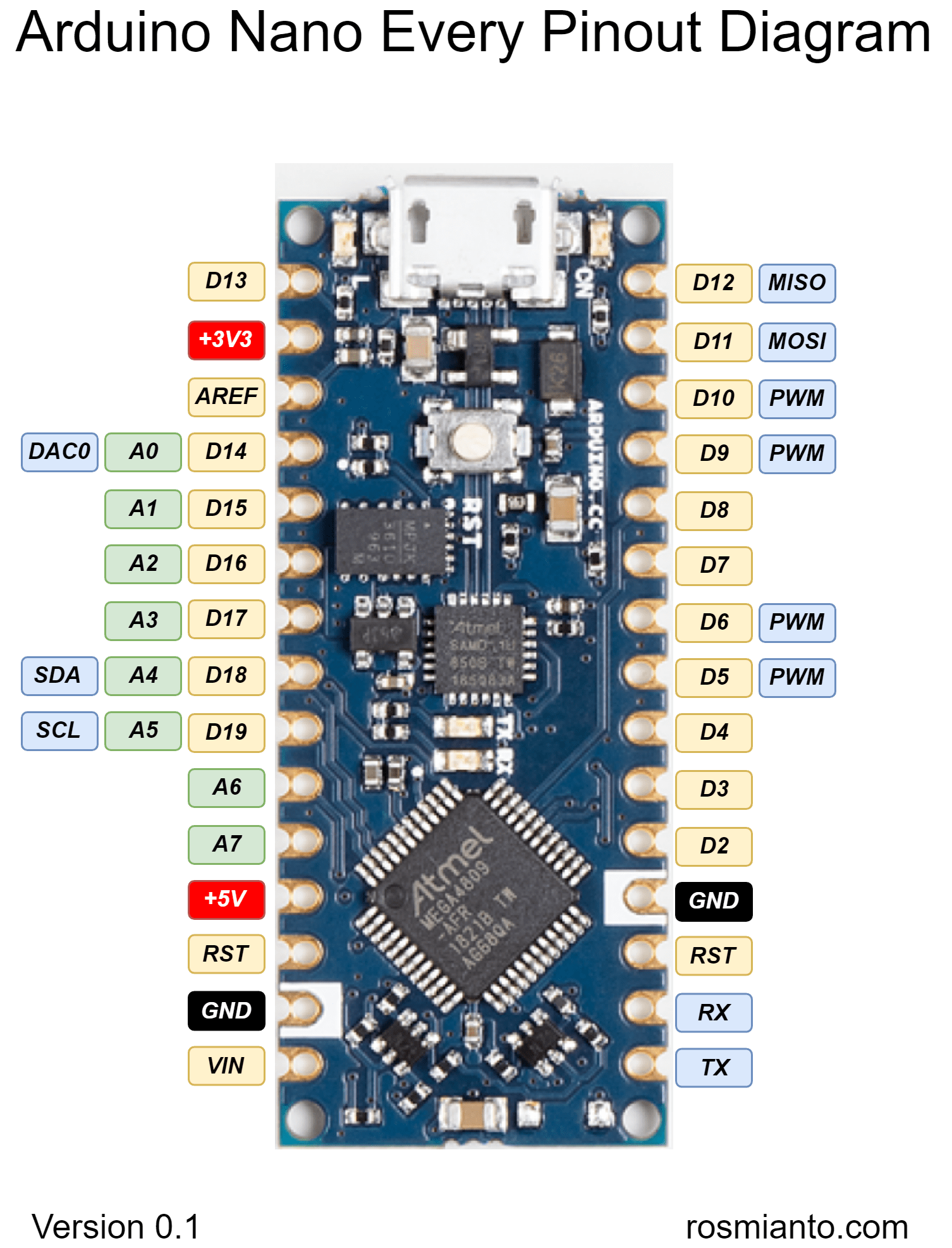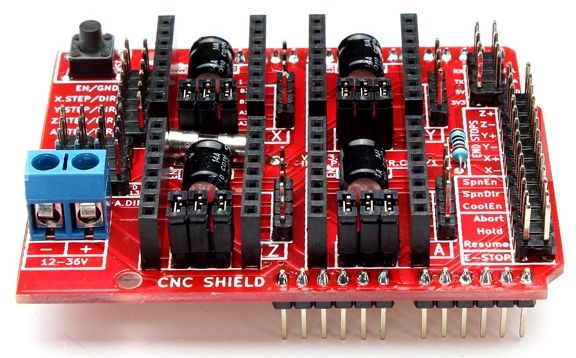

So let’s just get my torch here, 9, twenty seven and then the third one says KB a a now.
#Arduino nano pinout no 3volts pro
So I wonder if that is consistent, if you have Pro minis and the resonators say something other than 8, something something or a something something please let me know so now, let’s take a look at the voltage regulators on all these boards right on the 3.3 volt Pro minutes we’ve got this one, of course, that said LG 33, fair guess that that’s 3.3 volts this one says 9b 27 that’s not showing up very well. This one says a G, I think it is and this one which is still quite spins on sat.1 slide where’s the resonator on that one there it is up there hold on, says a F, so that’s interesting, the pull the camera out, the 5 volt ones with The 16 megahertz resonators all say ayyy something so here’s a table of these ceramic resonator markings for the 3.ģ volt 8 megahertz resonators, they all say 8, something something and on the 5 volts 16 megahertz ceramic resonators, they all say a dot something. One says a G is it or a Q? This one says a K. That one says AG the resonators up there by the switch, so I can do these without keep stopping this one says a n, the resonators down here by the chip.

I believe it is, and this is the one that says 80s, so certainly the 3.3 volt pro minis all have an 8 somewhere on the ceramic resonator. Well, I appear to have three of the 3.3 volts Arduino Pro Mini and six of the 5 volt one.

We can clearly see the LG 33 on the regulator, so are all of the eight megahertz ceramic resonators marked with an eight or something like that. Well, even with double macro magnifying lens it’s quite difficult to see, but I think that says eight 0s and the eight there is a little clue to it being eight megahertz. I may possibly have marked that myself when I got it, which was sensible, so how can we identify it from the components on the board? Well, of course, the two components of interest are the regulator, and that says: LG 33 well, that’s, a fair guess that it’s 3.ģ volts and the ceramic resonator now that’s, so tiny. Now this one here is marked 8 megahertz ceramic resonator, 3.3 volts regulator. There is actually a via that’s, not a mark.
#Arduino nano pinout no 3volts series
There are a series of silkscreen squares, but they’re often not marked that one. The 5 volt pro minis have a 16 megahertz, but how can i tell with these old pro minis, which I’ve long since forgotten, where they came from, which is which well sometimes on the back like this one, for example, let me focus on that. So the 3.3 volt arduino pro mini z’, have an 8 megahertz ceramic resonator. So they actually half the clock speed, because that makes calculating other factors much more easy and they stick an 8 megahertz ceramic resonator on the board. Now why the difference in clock? Speed? Well, it’s because of this graph, which is on page 316 off the 80 mega 328p datasheet, the Atmel chip that’s on the arduino – and you can see from this that, if you’re going to run the arduino or this chip at 5, volts, then you’re safe to run It up to 20 megahertz and 16 megahertz is of course, still viable there if you’re running it at 3.3, volts, which isn’t marked here you can possibly see it would be about here that we can’t quite safely run it at 16 megahertz. My plan for miniaturizing this hygrometer is to switch from the arduino uno to the pro mini for obvious reasons: it’s very, very tiny and I’m going to come up with a clever way of managing the sensor and the OLED display together but I’m, not going to say Too much about that just now, because I’m waiting for something to come in and but what I’m trying to do today is identify these pro minis, because there are two types: actually there probably more than two types: there’s, the 3.ģ volt Pro Mini, which runs at 8 Megahertz and there’s the 5 volt Pro Mini, which runs at 16 megahertz. Borden it I didn’t wake up to that fact: there’s the regulator 5 volts to 3.3 and that 6 pin well it’s, not a SOT, 23 it’s, even smaller than that that tiny 6 pin chip is a dual MOSFET and then there’s a quad pack of 103 10k Resistors there, so this board has its own level translators. It still works because those level translation components which are two MOSFETs a bunch of resistors and also the five volt to three volt 3.3 volt regulator – are actually on the back of this sense. It now indicates humidity in big numbers, with a percentage sign and temperature in small numbers with a degrees C after it, and this is the device that uses this si 702 one humidity sensor chip now I should just mention if you’re following this project, that the level Translatable this one here that I put between the Arduino and the sensor board is completely unnecessary.


 0 kommentar(er)
0 kommentar(er)
